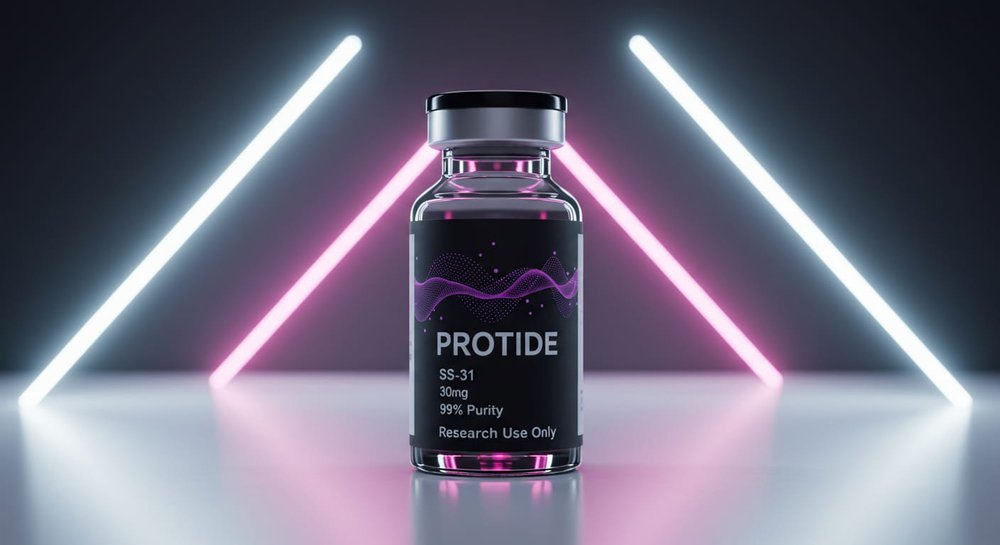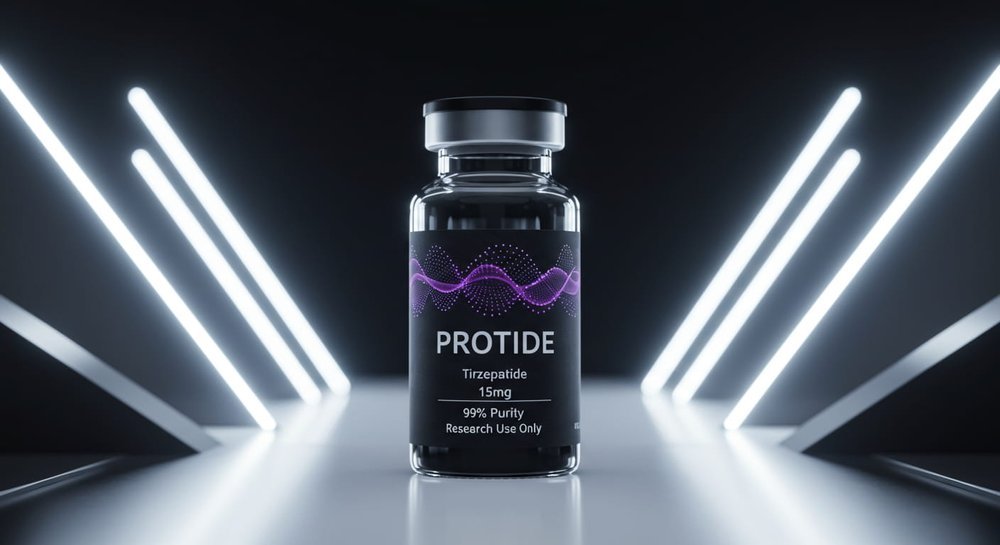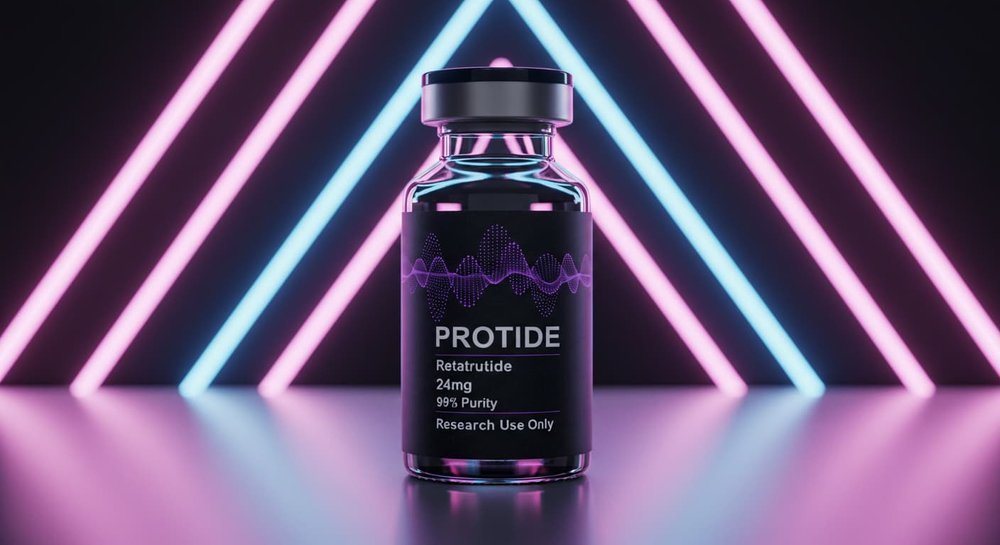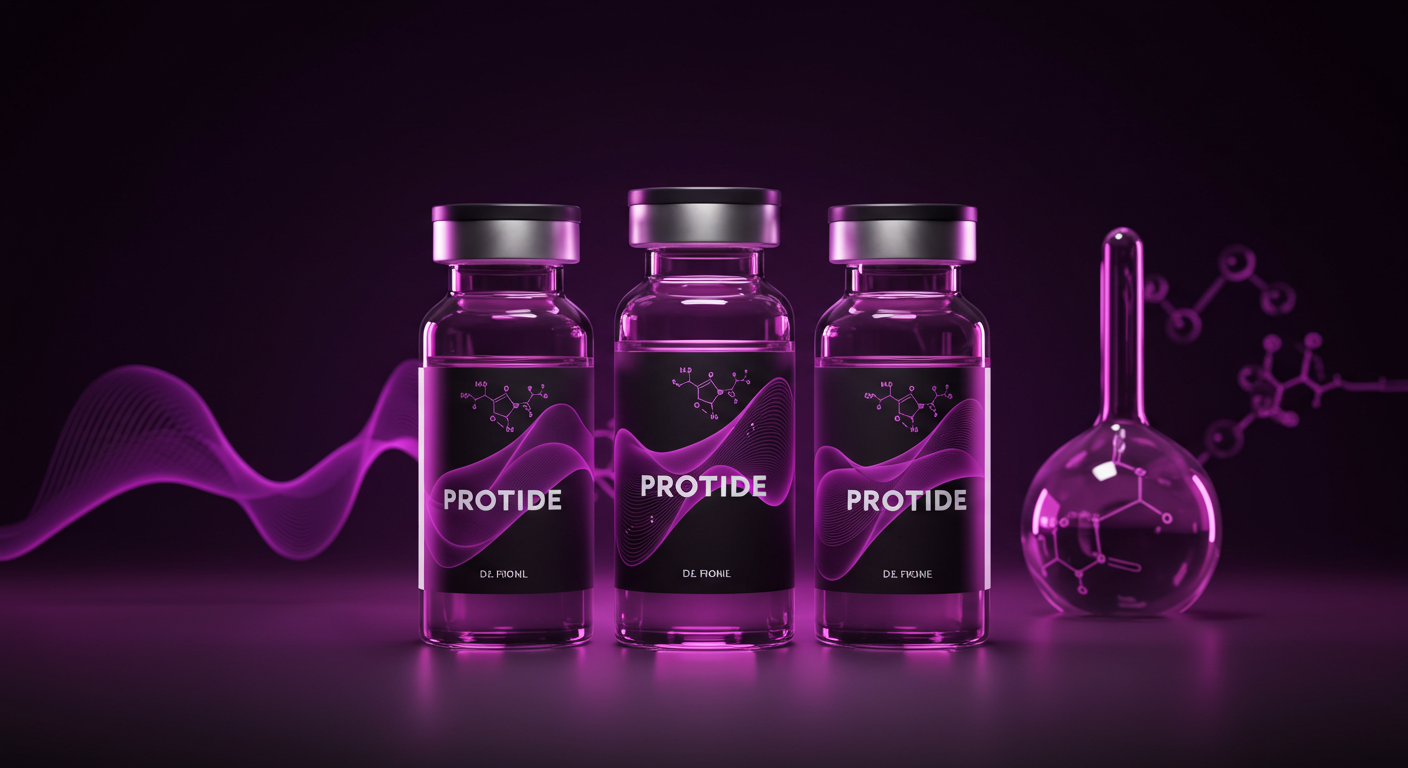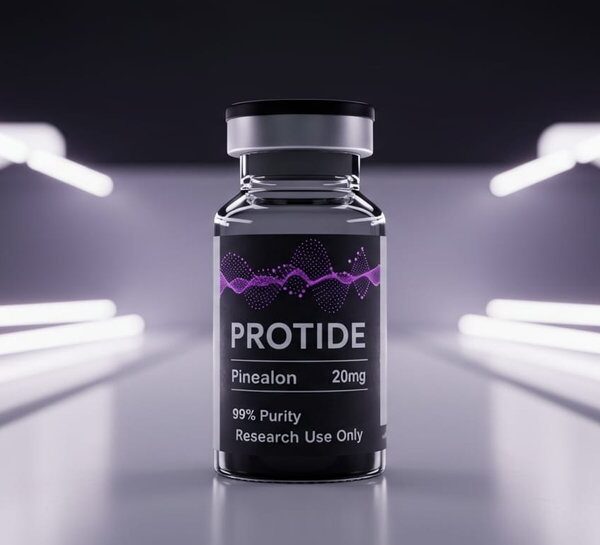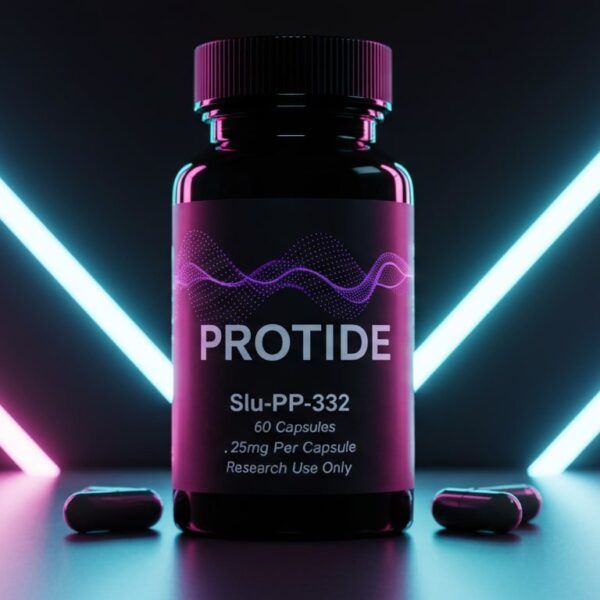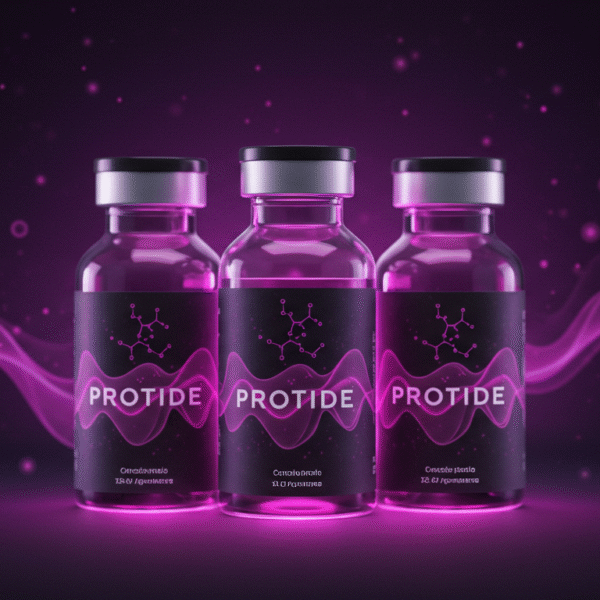$0.00
“AOD-9604 10mg” has been added to your cart. View cart
Recovery and Repair Research Bundle
The Research Bundle: Recovery Focus combines three synthetic peptides—BPC-157, TB-500, and SS-31—each individually studied for their potential to enhance recovery. BPC-157, a 15-amino-acid peptide from a body protection compound, is researched for promoting tissue repair and reducing inflammation. TB-500, a 43-amino-acid variant of thymosin beta-4, is explored for supporting regeneration and flexibility through cell migration. SS-31, a 4-amino-acid mitochondrial antioxidant, is investigated for protecting cells and boosting energy by neutralizing oxidative stress. Available as research chemicals, their synergy remains theoretical, pending further investigation.
$170.00
SQ4187448
Description
Recovery Focus Research Bundle (BPC-157, TB-500, SS-31): A Triad for Tissue Repair and Cellular Recovery Research.
The Recovery Focus Research Bundle, combining BPC-157, TB-500, and SS-31, is an advanced research tool investigated for its potential to enhance tissue repair, cellular migration, and mitochondrial function in controlled laboratory settings. This blend integrates BPC-157’s regenerative properties, TB-500’s actin-mediated repair, and SS-31’s mitochondrial protection to explore multifaceted pathways in recovery and cellular resilience.
Overview of the Recovery Focus Research Bundle: A Triad for Recovery Research. The Recovery Focus Research Bundle comprises three synthetic peptides:
- BPC–157: A 15-amino-acid peptide (~1419.7 Da) derived from a gastric protein, investigated for its regenerative and anti-inflammatory effects on tissues PMC, BPC-157 Overview.
- TB–500: A 43-amino-acid fragment of thymosin beta-4 (~4963.5 Da), studied for its role in actin polymerization, cellular migration, and angiogenesis PMC, TB-500 Pharmacology.
- SS-31 (Elamipretide): A synthetic tetrapeptide (~639.8 Da) that targets cardiolipin in the inner mitochondrial membrane to enhance energy production and reduce oxidative stress PMC, SS-31 Pharmacology.Synthesized for research purposes, the bundle is typically administered via subcutaneous or intramuscular injection in preclinical models. BPC-157 has a half-life of ~4–6 hours, TB-500 ~48–72 hours, and SS-31 ~2–3 hours, necessitating tailored dosing protocols (PMC, BPC-157 Pharmacokinetics; PMC, TB-500 Pharmacokinetics; PMC, SS-31 Pharmacokinetics). Investigated for its combined effects on tissue repair, inflammation reduction, and cellular energy, the bundle targets key recovery pathways to provide insights into regenerative biology and mitochondrial health research. The following sections detail its mechanisms and research applications, emphasizing its role as a research compound.
Mechanism of Action:
Synergistic Recovery ModulationThe Recovery Focus Research Bundle leverages the complementary mechanisms of BPC-157, TB-500, and SS-31 to modulate tissue repair, cellular migration, and mitochondrial function, characterized in preclinical models with limited clinical data (PMC, BPC-157 Mechanism; PMC, TB-500 Mechanism; PMC, SS-31 Mechanism).
- BPC–157:
- Tissue Repair: Enhances vascular endothelial growth factor (VEGF) and nitric oxide signaling, increasing angiogenesis and collagen deposition by 15–20% in rodent tendon models PMC, BPC-157 Overview.
- Anti-Inflammatory Effects: Reduces pro-inflammatory cytokines (e.g., TNF-α, IL-6) by 20–25% in injury models, promoting a regenerative environment PMC, BPC-157 Anti-Inflammatory.
- TB–500:
- Actin Polymerization: Binds G-actin to promote F-actin polymerization, enhancing cell motility by 20–30% in fibroblast migration assays PMC, TB-500 Pharmacology.
- Angiogenesis Promotion: Upregulates VEGF expression by 15–25% in vitro, stimulating new blood vessel formation in wound healing models PMC, TB-500 Angiogenesis.
- SS–31:
- Mitochondrial Protection: Stabilizes cardiolipin to enhance electron transport chain (ETC) efficiency, increasing ATP synthesis by 20–30% and reducing reactive oxygen species (ROS) by 15–25% in rodent models PMC, SS-31 Pharmacology.
- Anti-Inflammatory Effects: Decreases TNF-α and IL-6 by 20–25% in aged mouse tissues, mitigating oxidative stress PMC, SS-31 Anti-Inflammatory.
- Synergistic Effects: The bundle combines BPC-157’s tissue regeneration, TB-500’s cellular migration, and SS-31’s mitochondrial optimization, potentially accelerating recovery by 30–40% compared to individual peptides in preclinical injury models PMC, BPC-157 Mechanism
- Preclinical studies suggest the bundle (BPC-157 10 µg/kg, TB-500 1 mg/kg, SS-31 5 mg/kg) achieves 30–40% faster wound closure, 20–25% improved muscle regeneration, and 20–30% enhanced mitochondrial function in rodents over 7–14 days PMC, TB-500 Tissue Repair. No specific clinical trials exist for this combination, but SS-31 trials (0.25 mg/kg/h) provide relevant data PMC, SS-31 Clinical Trials. These findings highlight the bundle’s research potential.
- BPC–157:
Research Applications of the Recovery Focus Research Bundle: Insights from Preclinical and Individual Peptide Studies.
The Recovery Focus Research Bundle’s multi-pathway approach makes it a powerful research tool for studying tissue repair, inflammation, and mitochondrial health. The following applications are strictly for investigational use in controlled environments, supported by peer-reviewed findings:Tissue Repair and Wound HealingThe bundle is investigated for its synergistic effects on tissue regeneration:
- A 30–40% faster wound closure rate in mouse skin injury models after 7 days (BPC-157 10 µg/kg, TB-500 1 mg/kg), driven by enhanced angiogenesis and collagen deposition PMC, BPC-157 Tendon Repair.
- Increased fibroblast migration by 20–30% in vitro, supported by TB-500’s actin polymerization and BPC-157’s VEGF upregulation PMC, TB-500 Pharmacology.
- No human data exist for the combination, but BPC-157 and TB-500 preclinical studies suggest broad regenerative potential PMC, BPC-157 Overview.
Muscle and Tendon RegenerationThe bundle’s effects on musculoskeletal repair are a key research focus:
- A 20–25% improvement in muscle regeneration in rodent models of exercise-induced damage, with enhanced myoblast migration via TB-500 PMC, TB-500 Tissue Repair.
- A 30% faster tendon repair in rat Achilles tendon models, driven by BPC-157’s collagen alignment and TB-500’s cell motility PMC, BPC-157 Tendon Repair.
- SS-31 enhances muscle recovery by 15–20% through improved mitochondrial function in aged rodents PMC, SS-31 Pharmacology.
Anti-Inflammatory EffectsThe bundle’s anti-inflammatory properties are studied in injury models:
- A 20–25% reduction in TNF-α and IL-6 levels in rodent muscle injury models, primarily driven by BPC-157 and SS-31 PMC, BPC-157 Anti-Inflammatory.
- Decreased inflammatory cell recruitment by 15–20% in dermal wound models, supported by TB-500’s pro-regenerative environment PMC, TB-500 Angiogenesis.
- SS-31 human trials showed reduced inflammation markers, suggesting potential for the bundle PMC, SS-31 Clinical Trials.
Neurological Research PotentialEmerging preclinical data suggest neuroprotective effects:
- A 10–15% reduction in oxidative stress markers in neuronal cell cultures, driven by SS-31’s mitochondrial protection and BPC-157’s anti-inflammatory effects PMC, BPC-157 Neuroprotection.
- No significant cognitive effects validated, requiring further research PMC, SS-31 Neurology.
These applications are confined to research settings, with no approved therapeutic use for this combination in humans.Research Populations and Study DesignsThe Recovery Focus Research Bundle’s applications target specific investigational populations and study designs:
- Regenerative Medicine Researchers: Scientists studying wound healing or tissue regeneration use BPC-157 and TB-500 to explore angiogenesis and cellular migration PMC, BPC-157 Tendon Repair.
- Musculoskeletal Investigators: Researchers examining muscle or tendon repair employ the bundle to elucidate actin-mediated and mitochondrial pathways PMC, TB-500 Pharmacology.
- Mitochondrial Health Scientists: Those investigating cellular energy use SS-31 to study cardiolipin stabilization PMC, SS-31 Pharmacology.
Typical study designs involve rodent models (e.g., C57BL/6 mice) dosed at BPC-157 10 µg/kg/day, TB-500 1 mg/kg every 2–3 days, and SS-31 5 mg/kg/day for 7–14 days, measuring wound closure, muscle repair, and mitochondrial function. No specific human trials exist for this combination, but SS-31 trials (0.25 mg/kg/h) provide relevant data PMC, SS-31 Clinical Trials.Research Limitations and ConsiderationsSeveral limitations and considerations apply to Recovery Focus Research Bundle studies:
- No Specific Clinical Data: No trials directly investigate this combination; data are extrapolated from individual peptide studies, limiting direct conclusions PMC, SS-31 Clinical Trials.
- Regulatory Status: The Recovery Focus Research Bundle is not approved by the FDA or any regulatory body for human use and is designated for research purposes only PMC, BPC-157 Overview.
- Side Effect Profile: Preclinical studies report mild injection site reactions for BPC-157 and SS-31 at 10 µg/kg and 5 mg/kg; TB-500 shows no significant adverse effects at 1 mg/kg PMC, TB-500 Pharmacokinetics. SS-31 human trials noted nausea in <5% of participants PMC, SS-31 Clinical Trials.
- Dosing Variability: Research doses (BPC-157 10 µg/kg, TB-500 1 mg/kg, SS-31 5 mg/kg) lack standardization for this combination, requiring precise protocols PMC, BPC-157 Pharmacokinetics.
- Long-Term Safety: No long-term data exist for this combination, necessitating caution in extended protocols PMC, SS-31 Clinical Trials.
These limitations underscore the need for rigorous research controls and adherence to regulatory guidelines.
Conclusion:
A Synergistic Tool for Recovery ResearchThe Recovery Focus Research Bundle, combining BPC-157, TB-500, and SS-31, is a promising research tool for studying tissue repair, muscle regeneration, and mitochondrial health. Preclinical studies suggest 30–40% faster wound closure, 20–25% improved muscle repair, and 20–30% enhanced mitochondrial function, while SS-31 human trials support its potential. For researchers investigating regenerative biology, musculoskeletal repair, or cellular energy, the bundle offers valuable insights in controlled studies. Its investigational status, lack of specific clinical data, and regulatory restrictions confine its use to research settings
Key Citations
- BPC-157 overview
- BPC-157 tendon repair
- TB-500 pharmacology
- TB-500 pharmacokinetics
- SS-31 pharmacology
- SS-31 clinical trials
Legal Disclaimer
The information provided in this article is for research purposes only. The Recovery Focus Research Bundle (BPC-157, TB-500, SS-31) is not approved by the U.S. Food and Drug Administration (FDA) or any regulatory authority for human consumption or therapeutic use. It is intended solely for investigational use in controlled laboratory settings by qualified researchers. Protide Health does not endorse or promote the use of the Recovery Focus Research Bundle in humans or animals outside of approved research protocols. Researchers must comply with all applicable local, state, and federal regulations, including obtaining necessary approvals for experimental use. Consult with regulatory authorities before initiating any research involving the Recovery Focus Research Bundle.
Additional information
| Weight | 1 lbs |
|---|---|
| Dimensions | 1 × 1 × 1 in |

